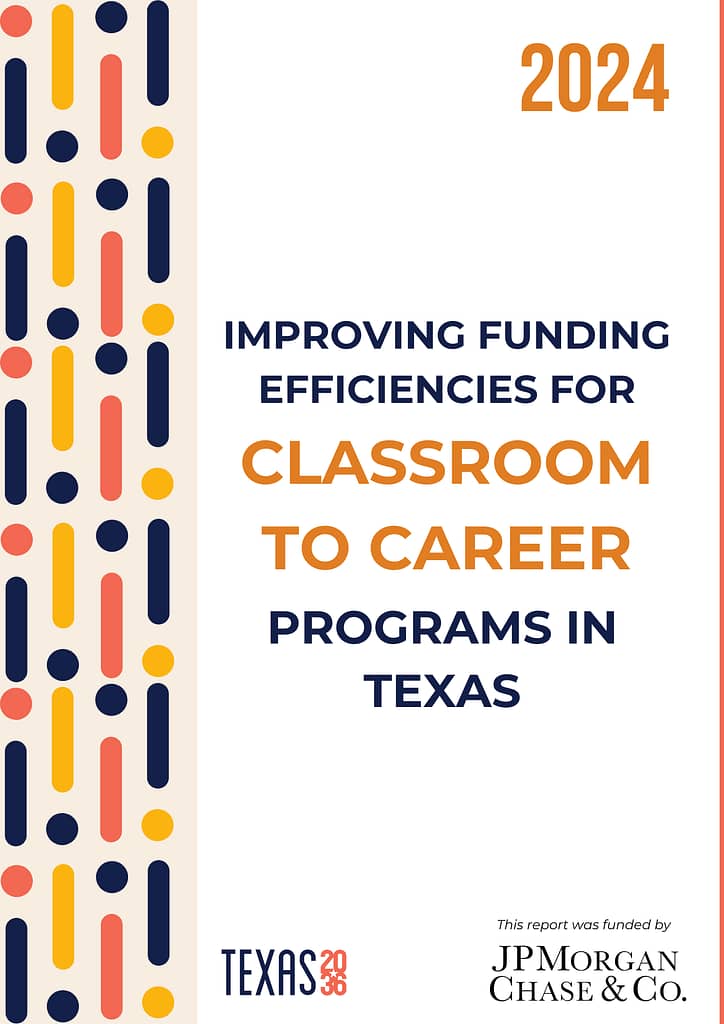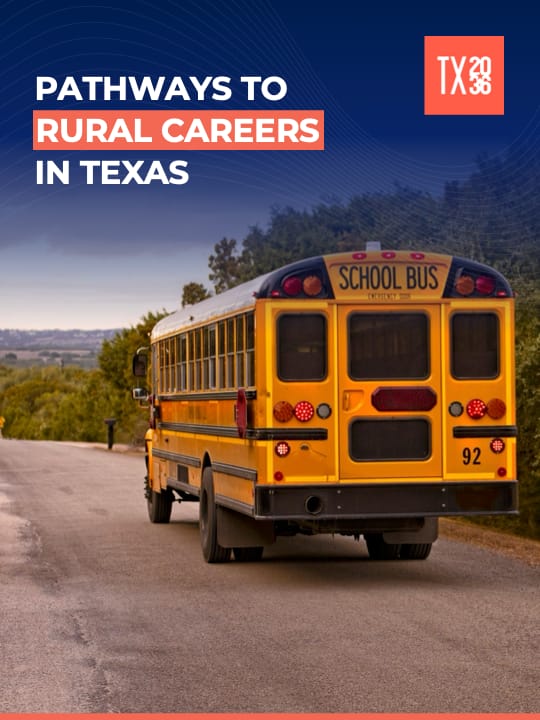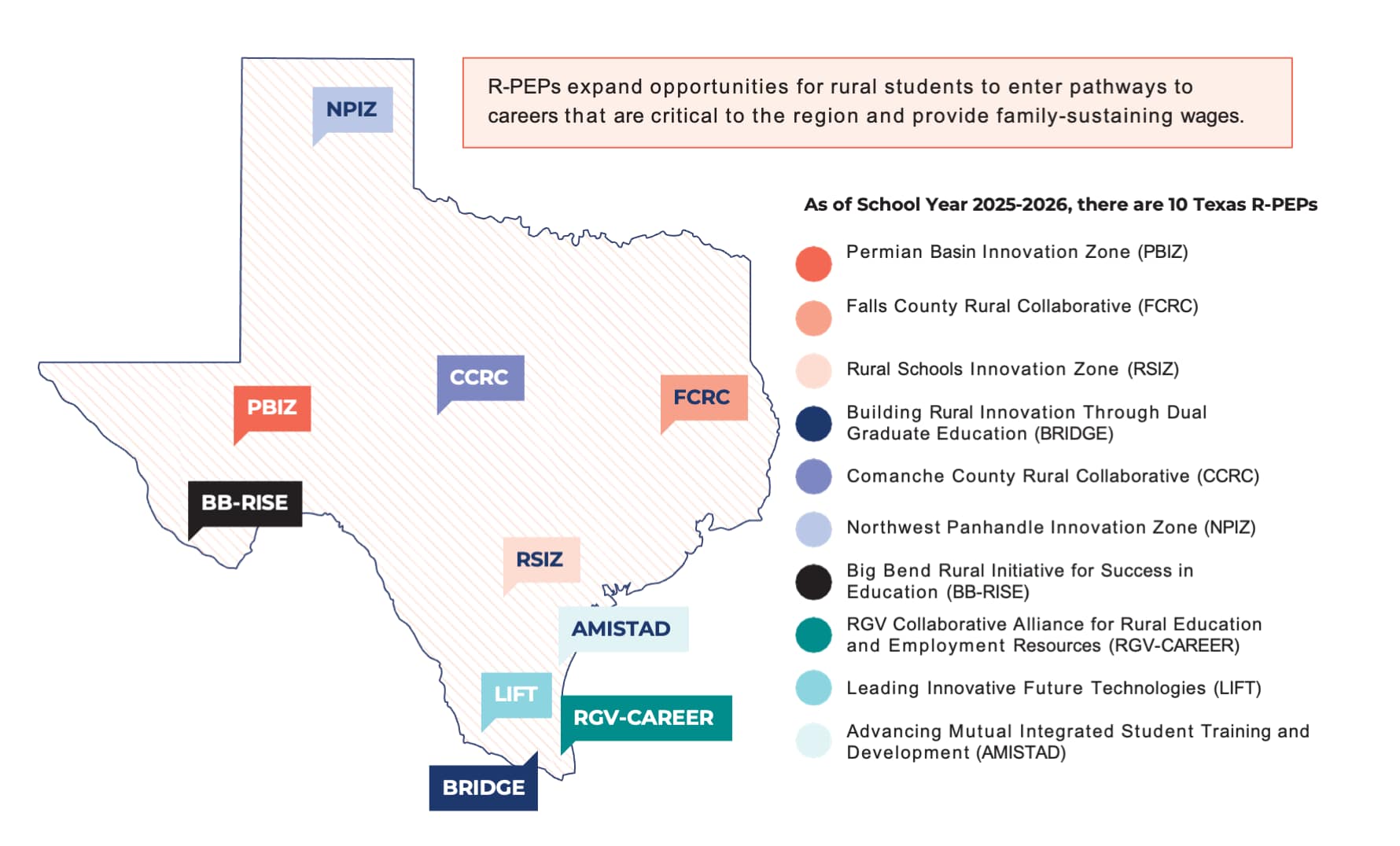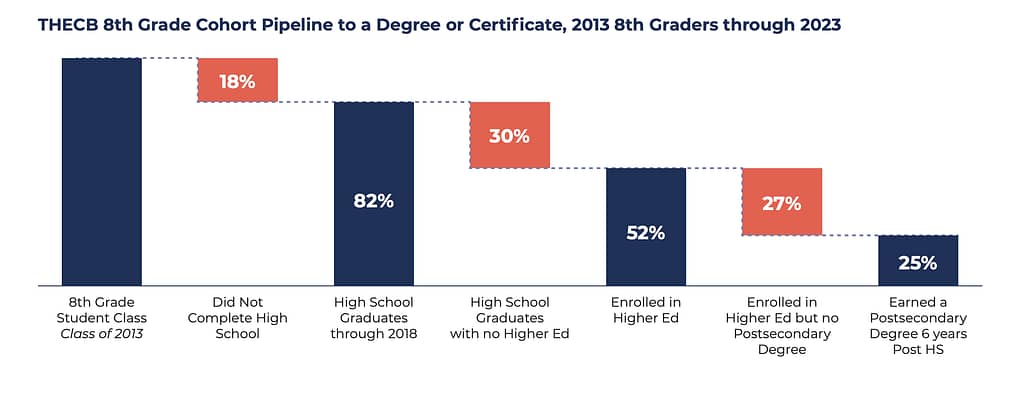Expanding the Promise of a Texas Diploma
Between 2021 and 2031, Texas will see nearly 1.7 million job openings each year, mostly from new jobs and retirements. Of those new jobs, nearly 1 million are expected to require some level of postsecondary credential.2 To succeed in today’s workforce, students need a strong foundation in the fundamentals and access to credentials that lead to high-wage, high-demand jobs.
More than 60% of jobs in Texas require some postsecondary education or training, but only around one in three Texas high school graduates are attaining this within six years of graduation.
But that is changing.
The Texas Legislature has changed the course of public education in Texas, amending the Texas Education Code to prioritize equipping students who graduate from a Texas public high school with the skills and credentials necessary to succeed as adults. The Legislature has also enacted transformational community college finance reform over the past several years, creating a system that will support regional economies across our state.
Improving educational outcomes and preparing Texans for successful careers is critical to our state’s future success. We have worked closely with state officials as they have redefined the goals of public education in Texas to explicitly include career readiness and credential attainment. And we have supported updated state financing systems to focus funding on strategies that lead to student success.
Prior to this year’s legislative session, our efforts helped contribute to this change through supporting the modernization of the Texas Permanent School Fund, the state’s investment fund for public schools, which is yielding record-setting funding for Texas public schools. Our efforts have also supported over $500 million to provide high-quality instructional materials to schools and teachers and a $691 million investment in overhauling community college finance to better align with workforce demand, placing Texas at the forefront of national higher education reform.
Following the 2023 legislative session, a sizable budget surplus presented Texas with an opportunity to take more meaningful steps to improve public education by applying resources in smart, targeted ways. At Texas 2036, we seized on this opportunity to advance policy recommendations that could move the needle for kids across the state.
Texas 2036 backed interim committee charges studying how to expand access to work-based learning and credential attainment in fields that lead to family-sustaining wages, while also preserving postsecondary opportunities. We also backed efforts to assist state and local initiatives to increase mathematics achievement and ensure Texas is a national leader in math proficiency. And we supported studying the district and state policy changes and investments that would be needed to increase the number of students reading and doing math at grade level by the end of third grade.
Following the release of the formal House and Senate interim charges in 2024, we engaged heavily in committee hearings as expert resources and advocates for expanding the number of certified teachers and improving student achievement in both reading and math. We also published issue briefs and in-depth reports, including:






